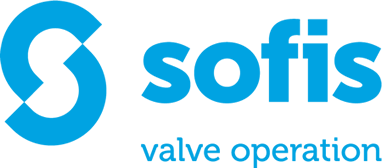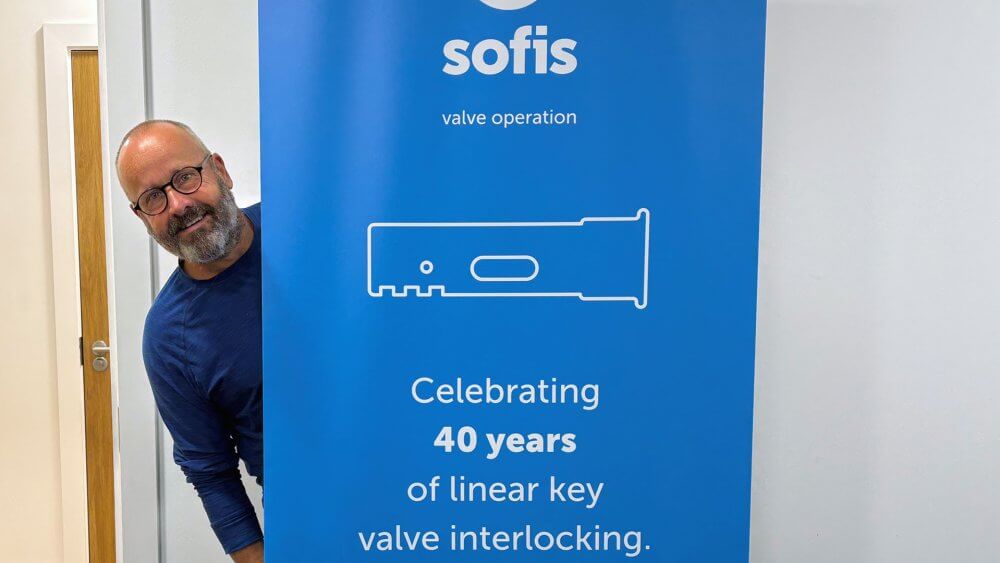“Before 1985, valve interlocking was quite basic,” recalls Adrian Brown, Technical Support Specialist at Sofis. “It was mostly about putting locks on valves in a rudimentary way. Companies like Castell were welding brackets onto valves. But then Smith Flow Control revolutionized the industry by simplifying the process, making it possible to secure valves without modifying them.” This innovation extended to a wide range of applications, from locking pressure safety valve (PSV) systems to pigging installations, and designing door locks, switch locks, and motorized valve locks. “That’s what set Smith Flow Control, and later Netherlocks, apart. We provided solutions rather than just products.”
A Problem-solving mindset
One of the key aspects that made Smith Flow Control successful was its approach to customer needs. “Our customers appreciated that they could come to us with a problem, and rather than just saying, ‘No, we only supply an interlock for a valve,’ we worked to find solutions,” Adrian explains.
A family legacy in engineering
Adrian’s journey with Smith Flow Control began in 1985. “My father was one of the directors and key founders of the company. When they started the business in April of that year, I had just finished my engineering apprenticeship. I joined in September and began working on machining internal components and keys.” The first key design was a simple steel bar with a plastic molding at the end. But after just six months, improvements were made by investing in castings, a shift that laid the foundation for the company’s future success.
From hands-on manufacturing to design innovation
Adrian was personally involved in building the first Smith Flow Control interlocking system for the Balmoral platform, a floating production vessel. His role quickly expanded, and after three years, he left to start his own steel fabrication business. However, in 1992, he returned to Smith Flow Control, initially working in the workshop before moving into design. “In the design office, I spent five years developing adapters, anchors, and bracketry, which helped me gain a deep understanding of valve interlocking applications. I also spent significant time on-site, learning how our products functioned in real-world environments.”
Pioneering the FlexiDrive remote valve operator
Adrian’s career took another turn in 2008 when he joined the R&D department as a New Product Development Manager. “I was responsible for engineering the FlexiDrive remote valve operator from scratch. Looking back, I’m proud of that achievement; it went from nothing to where it is today.” Following this success, Adrian worked on streamlining valve interlocks, making them easier to manufacture and assemble. This led to his current role in Technical Support. “By that point, I had accumulated a wealth of experience across all our products, making it a natural transition into this role.”
The future of valve interlocking
After nearly four decades in the industry, Adrian is struck by how the core concept of valve interlocking has remained consistent. “The principles we established all those years ago are still in use today, and that’s something I take great pride in.” Looking ahead, he believes Sofis will focus on improving operational efficiency and making life easier for operators. “There’s a growing need to connect mechanical valve interlocks to electronic systems. Plants want real-time data. How open is this valve? How closed is that one? Valve position indication will be crucial. But you always need a mechanical fallback because, if the power goes out, an electrical system alone won’t tell you anything.”
A career highlight: The Marathon Brae Bravo project
One of Adrian’s most memorable experiences was his involvement in the Marathon Brae Bravo platform. “I built the valve interlocks for the project in the workshop and then had the opportunity to visit the shipyards to see the construction of the modules. I spent about six months working onshore, conducting trial fits and installations in Scotland.” The moment that stands out the most? “Flying in a helicopter and seeing the platform fully assembled, illuminated at night. It was like a massive steel island. When we worked on the individual modules, we didn’t realize their scale, but seeing it all come together was incredible.” Of course, not all offshore experiences were as thrilling. “Back in the days before radar, I once got stuck on a platform for seven days due to fog. We had completed all our work and spent the entire time playing pool because the helicopters couldn’t land to take us back.”
Life beyond work: Restoring a 16th-century cottage
Outside of work, Adrian keeps himself busy with hands-on projects. “I recently moved into an old cottage built in 1550, which I’ve been renovating. I’ve completed the upstairs, installed a new kitchen and bathroom, and now I’m working on the exterior and the garden.” He also has a passion for woodworking. “My garage is a fully equipped workshop with saws and bandsaws. I’ve built frontages for street food stalls and even converted a 1970s caravan into a food truck.” When he’s not working on his home or crafting new projects, Adrian enjoys camping. Naturally, in a van he built himself.


